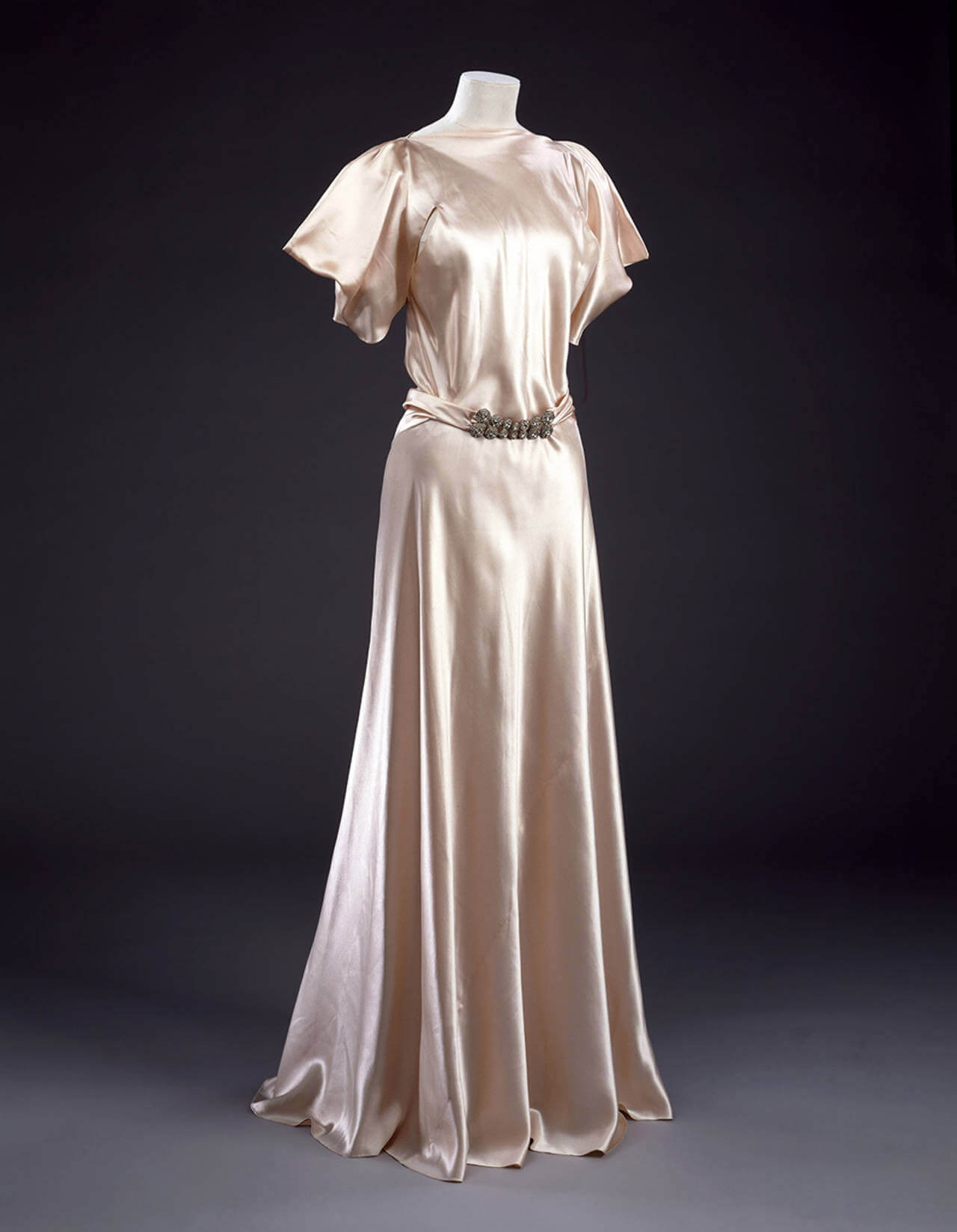Unraveling the Mystery: Bias Cut Fabric + Seven Sewing Patterns
Whatever stage you’re at in your journey of creating a handmade wardrobe, there are a few basic concepts that should become second nature in your sewing practice. For example, having separate pairs of scissors—one for paper and one for fabric—and understanding the grainline your pattern pieces require, whether they should be cut on the straight of grain or on the bias. The majority of modern sewing patterns using woven fabrics are designed to be cut on the straight of grain, but what about those garments that need to be cut on the bias? What does it mean to cut fabric on the bias?
In fabric terminology, the “bias” refers to a 45-degree angle to the fabric’s grainline. Imagine a piece of fabric as a grid where the vertical threads are the warp and the horizontal threads are the weft. Cutting on the bias means slicing through the fabric diagonally, rather than following the straight lines of either the warp or weft.
So why would anyone want to use fabric that is cut on the bias? For starters, fabric on the bias has more stretch and drape, which means it hugs the body more smoothly while also allowing for more fluid, deliciously swishy movement. It’s like the fabric suddenly has a new personality and life, which is why designers have been obsessed with creating bias-cut garments for almost a century.
The word “bias” originates from the Old French term “biais,” which means slant or slope. The word made its way into the English language in the 16th century and eventually found a perfect fit in the context of clothes making.
In the 1920s and ’30s, two particular French couturiers became renowned for their mastery of draping and innovative use of bias-cut fabric.
The first, Madeleine Vionnet, was considered the pioneer of the bias cut. Her background in draping and patternmaking laid a strong foundation for exploring and harnessing the bias cut’s full potential. At a time when fashion relied heavily on tailored construction, Vionnet quite literally went against the grain with her bias-cut designs, which carefully draped along the body and clung naturally without feeling restrictive. A master of her craft, her seemingly simple silhouettes were cut with precision and were complex in construction. She clearly understood the importance of immaculate execution when it came to beautifully simple, clean silhouettes.

Madame Grès : La Couture à l’Oeuvre Exhibition, 2011, Musée Bourdelle, Paris. Image courtesy of Madame Grès : Sculptural Fashion by Olivier Saillard in association with the 2013 exhibition at the MoMu Fashion Museum, Antwerp
The second couturier of note, Madame Grès, was originally trained as a sculptor. Grès brought a unique perspective to dressmaking that emphasized the form of the human body. Her sculptural approach to fashion made her a trailblazer in the art of draping fabric on the bias. By experimenting with this diagonal technique, she realized she could create garments that hugged the body’s natural curves, flowed gracefully, and moved fluidly with the wearer. Though not an entirely new concept to dressmakers, Madame Grès perfected and popularized the bias cut. Evidence of this can especially be seen in her Grecian-inspired dresses, in which she applied intricate pleating and beautifully languid draping—two design features that became her signature style. She was a genius at manipulating fabric to lay across the wearer’s body with such elegant ease and sophistication.
The bias cut technique didn’t just make dresses look amazing; it also revolutionized how women were able to move in their clothes. This technique offered a freedom of movement thanks to the stretch it naturally provided, which was a big departure from the tightly-laced corsets that were previously worn.
Today, pattern designers in both the fashion world and the home sewing community continue to use the bias cut in their collections because of how it enables garments to drape beautifully around the body’s natural curves without the need for complex tailoring.
Here’s a list of a few gorgeous modern sewing patterns that use bias-cut fabric:
- Fabrics-Store: Nico Dress & Top – This pattern collection features sleeveless dresses and tops with bust darts for a timeless look that can easily be dressed up or down.
- Fabrics-Store: Ida Wrap Skirt – A classic wrap skirt with side ties that hits just above the knee, perfect for year-round wear. Bonus: it’s a free pattern!
- Sewing Patterns by Masin: Sicily Slip Dress – A sewing community favorite, this slip dress features a flirty cowl neck with two different strap options and is said to be a quick and easy sew.
- Staystitch Pattern Co: Coco Bias Skirt – A beginner-friendly skirt sewing pattern featuring an elasticized waist and a side slit.
- Closet Core Patterns: Simone Slip & Camisole – A lingerie-inspired take on the iconic slip silhouette, featuring a V neckline, pieced bodice, and adjustable rouleau straps.
- Soften Studio: Clo Bias Skirt – A laid-back, midi-length skirt featuring an A-line silhouette with an elasticized drawstring waist that’s become a staple in the sewing IG community.
- Paradise Patterns: Smultron Dress – A voluminous dress with two neckline variations, thin spaghetti straps that beautifully graze over the shoulders, and unlimited options for lengthening or shortening.
















































4 Comments
Mr Robin
If you guys are thinking about Where To Buy Clothes For wedding events and parties.
Hmm, I’ll highly recommend trying to check out the Website: https://rajasab.com/ these guys offer everything from relaxed wear to formal dress, etc and also these guys provide the customer custom tailors service to create your own size t-shirt suits and everything whatever you like maybe it’s the right place for you ^^ because why highly recommend is that my personal experience is were very good with this brand and with the customer support to much recommend.
Pandit Devsharma
Great read! This blog explains acupuncture in a simple way. It’s informative and easy to understand. Highly recommend checking it out!
Marian Spadone
Thanks for this article. I’ve had the Nico pattern for a while but I keep putting it off- I’ve got some fear of being able to cut accurately on the bias, and am a bit unsure of my ability to keep the fabric from stretching while I’m sewing. I’ve recently tried starching and ironing a piece of linen that I used for making bias tape and that helped. Any tips for either of these are welcome!
Meanwhile, wow, those photos of early bias draped gowns are a treat! All those pleats…whew!
Tom S.
Love the article. Bias cut garments are my favorite. Yes uses more fabric but worth it!